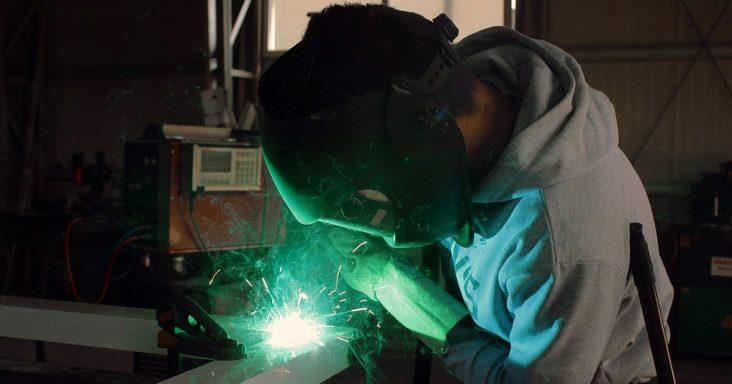Manufacturing sector grows at slower pace in January; labor issues persist
by February 1, 2021 10:18 am 318 views

Economic activity in the manufacturing sector increased at a slower pace in January, from December, and the overall economy rose for the eighth consecutive month, according to the Institute for Supply Management (ISM). Meanwhile, manufacturers continued to report labor issues at their factories as prices rise.
The ISM released Monday (Feb. 1) the Manufacturing ISM Report on Business that shows the Manufacturing Purchasing Managers’ Index (PMI) fell 1.8 percentage points to 58.7% in January, from December. A PMI above 50% indicates the manufacturing economy is expanding.
The new orders index fell 6.4 percentage points to 61.1% in January. The production index fell 4 percentage points to 60.7%. The backlog of orders index rose 0.9 percentage points to 59.7%. The employment index rose 0.9 percentage points to 52.6%. The supplier deliveries index increased by 0.5 percentage points to 68.2%. The inventories index fell 0.2 percentage points to 50.8%. The prices index increased by 4.5 percentage points to 82.1%. The new export orders index fell by 2.6 percentage points to 54.9%. The imports index rose by 2.2 percentage points to 56.8%.
“The manufacturing economy continued its recovery in January,” said Timothy Fiore, chair of the ISM Manufacturing Business Survey Committee. “Survey committee members reported that their companies and suppliers continue to operate in reconfigured factories, but absenteeism, short-term shutdowns to sanitize facilities and difficulties in returning and hiring workers are continuing to cause strains that limit manufacturing growth potential. However, panel sentiment remains optimistic, similar to December levels.
“Demand expanded, with the new orders index growing at a strong level, supported by the new export orders index expanding, customers’ inventories index remaining in ‘too low’ territory and at a level considered a positive for future production, and the backlog of orders index remaining at high levels.”
Consumption, which is measured by the production and employment indexes, contributed to a combined 3.1 percentage point decrease to the PMI.
“Five of the top six industries reported moderate to strong expansion,” Fiore said. “The employment index expanded for a second straight month, but panelists continue to note difficulties in attracting and retaining labor at their companies and supplier facilities. Inputs – expressed as supplier deliveries, inventories and imports – continued to indicate input-driven constraints to production expansion, at higher rates compared to December, as indicated by minimal gains in inventory levels and declining supplier performance. Imports expanded in the period, despite port backlogs, but not at levels desired by panelists.”
Supplier delivery challenges continued, and this contributed to the PMI. The prices index “surged dramatically in January, hitting a level last reached in April 2011, indicating continued supplier pricing power,” Fiore said.
Five of the six biggest manufacturing industries had moderate to strong growth in January, including chemical products; fabricated metal products; transportation equipment; food, beverage and tobacco products; and computer and electronic products. Petroleum and coal products contracted.
“Manufacturing performed well for the eighth straight month, with demand, consumption, and inputs registering strong growth compared to December,” Fiore said. “Labor market difficulties at panelists’ companies and their suppliers will continue to restrict the manufacturing economy expansion until the coronavirus (COVID-19) crisis abates.”
A respondent in the chemical products industry said “business remains strong. Manufacturing running at full capacity.” In the transportation equipment industry, a respondent reported strong demand and limitations in supply to meet the increased demand. In the food, beverage and tobacco products industry, a respondent noted that labor continued to be one of the biggest challenges.
In fabricated metal products, an industry respondent said “business demand is going way past pre-COVID-19 [levels].” In the machinery industry, a respondent said its production has been disrupted as a result of its supply base struggling to keep up with demand. A respondent in miscellaneous manufacturing said a rise in the number of employees with COVID has negatively impacted production. A respondent in electrical equipment, appliances and components said business increased 5% in 2020 and expects growth of 7% or more in 2021.
